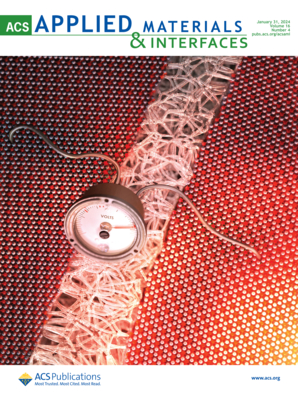Ferritin/Ferroportin-Regulating Nanoparticles Boosting Intracellular Free Iron for Enhanced Ferrotherapy
IF 8.3
2区 材料科学
Q1 MATERIALS SCIENCE, MULTIDISCIPLINARY
引用次数: 0
Abstract
Ferroptosis therapy efficacy of cancers suffers from relatively low concentrations of intracellular free iron ions due to the efficient regulation of iron through storage in ferritin and efflux via ferroportin (FPN). In this study, a ferritin/ferroportin-hijacking nanoplatform (Fe3O4-ART@MM-Hep) containing artemisinin (ART) and hepcidin (Hep) is fabricated to boost intracellular free iron ions and induce reactive oxygen species (ROS) storm. Once the tumor site is reached, the hepcidin targeted binds to FPN and triggers the internalization and degradation of FPN, blocking the efflux of intracellular iron ions. Meanwhile, artemisinin induces lysosomal degradation of ferritin, liberating the endogenous iron. Combined with exogenous iron supplemented by Fe3O4, the nanoplatform facilities the generation of ROS. What’s more, the released Fe2+ catalyzes artemisinin to generate carbon-centered free radicals, further enhancing tumor killing ability. All of the above strategies trigger an ROS storm in tumor cells and indicate a promising platform for high-performance ferrotherapy.

铁蛋白/动铁蛋白调节纳米颗粒促进细胞内游离铁的强化铁治疗
由于铁蛋白对铁的储存和铁蛋白(FPN)对铁的外流具有有效的调节作用,因此细胞内游离铁离子浓度相对较低,从而影响了铁蛋白对癌症的治疗效果。本研究制作了一种含有青蒿素(ART)和肝素(Hep)的铁蛋白/铁蛋白劫持纳米平台(Fe3O4-ART@MM-Hep),以提高细胞内游离铁离子浓度并诱导活性氧(ROS)风暴。一旦到达肿瘤部位,靶向血红素就会与 FPN 结合,引发 FPN 的内化和降解,阻止细胞内铁离子的外流。同时,青蒿素诱导铁蛋白溶酶体降解,释放内源性铁。结合由 Fe3O4 补充的外源铁,纳米平台可促进 ROS 的生成。此外,释放出的 Fe2+ 催化青蒿素产生以碳为中心的自由基,进一步提高了杀灭肿瘤的能力。上述所有策略都能在肿瘤细胞中引发 ROS 风暴,为高性能铁治疗提供了一个前景广阔的平台。
本文章由计算机程序翻译,如有差异,请以英文原文为准。
求助全文
约1分钟内获得全文
求助全文
来源期刊

ACS Applied Materials & Interfaces
工程技术-材料科学:综合
CiteScore
16.00
自引率
6.30%
发文量
4978
审稿时长
1.8 months
期刊介绍:
ACS Applied Materials & Interfaces is a leading interdisciplinary journal that brings together chemists, engineers, physicists, and biologists to explore the development and utilization of newly-discovered materials and interfacial processes for specific applications. Our journal has experienced remarkable growth since its establishment in 2009, both in terms of the number of articles published and the impact of the research showcased. We are proud to foster a truly global community, with the majority of published articles originating from outside the United States, reflecting the rapid growth of applied research worldwide.
 求助内容:
求助内容: 应助结果提醒方式:
应助结果提醒方式:


